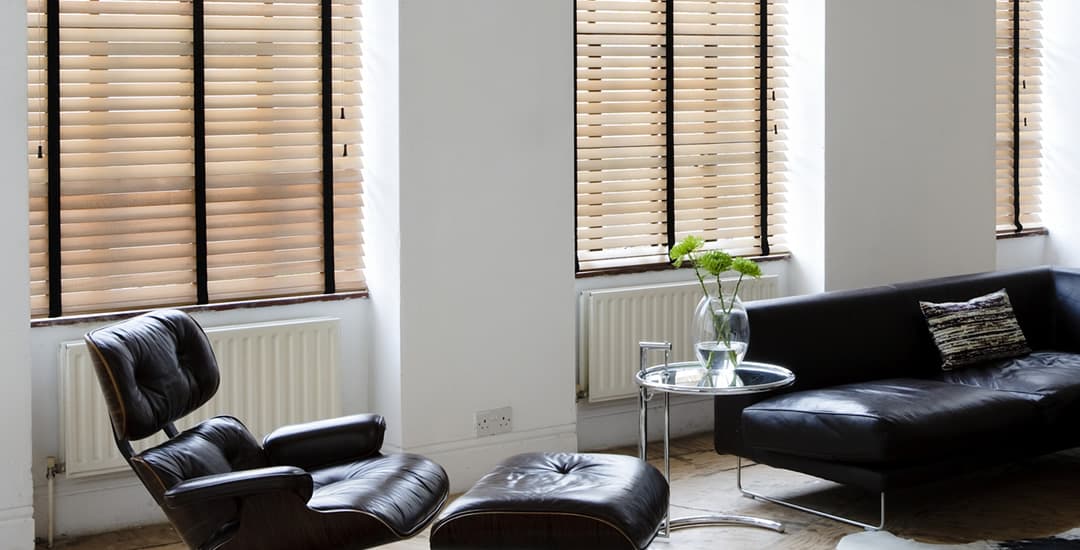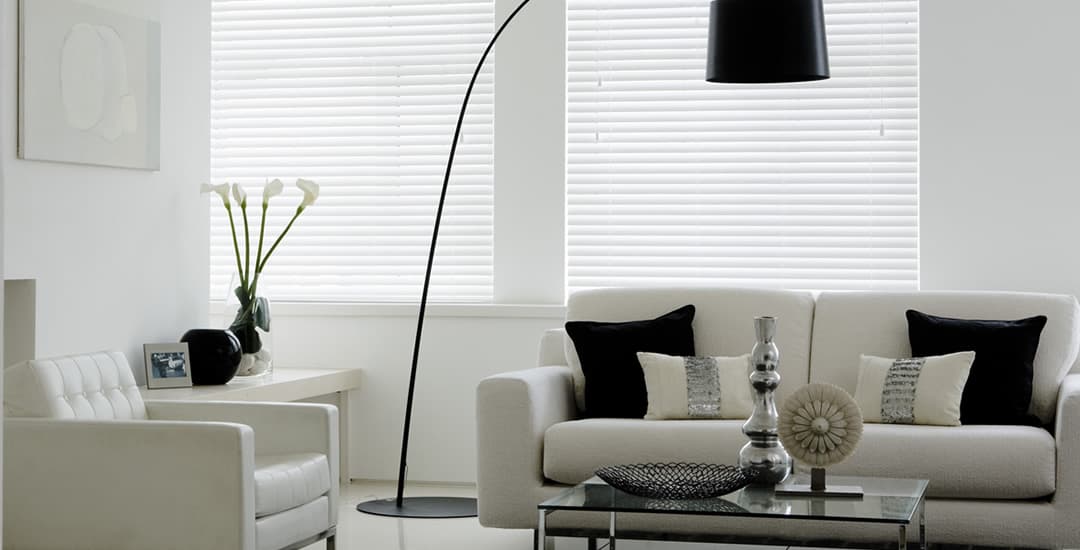
“How much do wood blinds cost” is one of those questions that encompasses a lot of variables, from those at your end – the size of the window, for instance – to those at the maker’s end, such as the quality of the materials, and whether you buy made-to-measure or readymade.
If your absolute favourites are wooden blinds, expensive may not even come into it; but if price is a definite factor, it is worth mentioning that wooden blinds are more towards the higher end of the pricing scale when compared to say, faux-wood blinds, roller blinds, or vertical blinds.
This reflects the fact that wood is a natural material, which kind of takes a while to grow; and that then costs to harvest and process sustainably and responsibly too (which is important to most buyers of real wood blinds, and certainly to us as a seller of them).
This blog post will provide some guidance on all things relating to wooden blind prices, covering some of our most common questions like “how much do wood blinds cost per window,” and how much made-to-measure versus readymade options might be too.
Are wooden blinds expensive?
Wooden blinds are more expensive (as a general rule) than roller blinds, vertical blinds, faux-wood blinds, or aluminium Venetian blinds. They’re around on a par with the cost of day and night blinds (also known as zebra blinds – not made from real zebras) and generally cheaper than Roman blinds.
There is a distinct pecking order of window blinds, basically, and prices rise the nearer to the top of it your blinds are. Wooden blinds “expensive” status comes largely from the time and costs involved in managing the forests they come from, harvesting and shipping the wood, and ongoing investment in sustainable and ethical production methods, to ensure it doesn’t damage the environment but does benefit the people who work with it.
It’s worth noting too that everything is relative (to something…) and while wooden blinds are more expensive than most other types of blinds, they’re waaaay less costly than plantation shutters, yet result in a very similar appearance and arguably offer far more versatility in terms of light and privacy control.
Most wooden blinds are crafted from what’s commonly known as basswood, the lightweight and yet hardwearing product of the linden or lime tree. This is the most popular choice for wooden blinds as it ensures the blind is lightweight enough to operate without masses of effort, but also that it is durable, and able to withstand the rigours of daily long-term use.
It’s also good looking, with a beautiful deep grain. This looks fantastic with just a light stain applied, which, depending on shade, enables it to emulate many other types of wood and so, match the rest of your décor. It can also be painted in pretty much any colour you can think of, in either a gloss, satin or matt finish.
How much do wooden blinds cost?

Getting right down to brass tacks then, how much do wooden blinds cost? UK prices can of course vary a lot from place to place, but I’ll try to give you a ballpark.
At the bottom end of the scale, if you’re buying from one of the big lads on the high street (or retail park more commonly these days) like Argos, B&Q, Dunelm, or Ikea, readymade wooden blinds for a dinky window could cost as little as £6. Readymade wood blinds come in set sizes, which means you might luck out and find that you have really cooperative windows in this respect, but are far more likely to need to do a bit of finagling to make it work.
There’s two approaches to dealing with a window that gets on with readymade blinds about as well as I, as a tall woman, get on with pencil dresses; the first of these is to get the next size up and trim it to fit. (To be clear, this works for blinds, not dresses, and then only if you’re good with DIY and/or lucky.)
The second is to once more buy a blind larger than the window but as close as you can get, and then hang it outside of the window recess without trimming it, so it covers a bit of (or a lot of) the wall either side. This is usually passable if the difference is only a few inches, but can look a bit… Not great otherwise.
Anyway, made-to-measure wooden blinds cost more than readymade, but negate the difficult decisions and the need to be able to go in a straight line with a hacksaw, and aren’t always a huge hike up in price either.
It may also be worth mentioning that if you crash and burn trying to cut a readymade wooden blind to size and so, have to buy two, the made-to-measure option would actually have been cheaper… Just a thought.
Made-to-measure wooden blind prices start from £12 for small windows, which is far less than a lot of people assume. They’re also made-to-measure, obvs, saving you time and hassle, and will most definitely be better quality and available in far more options in terms of colours and finishes than an off-the-peg blind.
How much do wooden blinds cost per window?
Dunno, how big is ya window? Wait, don’t go. Ok here’s some broad averages to compare.
Readymade wooden blinds:
| Smallest sized window | Largest sized window | Average sized window (120cm x 120cm) |
| £6 | £140 | £57 |
Made-to-measure wooden blinds:
| Smallest sized window | Largest sized window | Average sized window (120cm x 120cm) |
| £12 | £350 | £78 |
Basically, very small wooden blinds are low cost enough that price probably won’t be enough of a factor to put you off made-to-measure; the largest sizes though are a bit more divergent. Bear in mind that the largest made-to-measure blind you can buy is going to be a ways bigger than the largest readymade, so it’s not really reasonable to think of that as a like-for-like comparison.
For an average sized window, your made-to-measure blind is going to cost more, but only in the region of around 20%, give or take.




